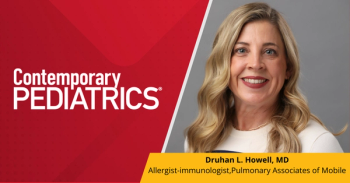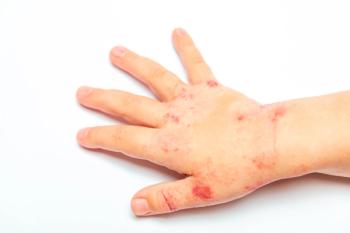
- Consultant for Pediatricians Vol 8 No 7
- Volume 8
- Issue 7
Pityriasis Lichenoides Et Varioliformis Acuta in a 7-Year-Old Boy
A 7-year-old boy was brought for evaluation of a nonpruritic, nonpainful, evolving polymorphic rash that began on the torso and spread to the extremities, face, palms, and soles over a 2-week period. He had been otherwise healthy and had no history of constitutional symptoms.
A 7-year-old boy was brought for evaluation of a nonpruritic, nonpainful, evolving polymorphic rash that began on the torso and spread to the extremities, face, palms, and soles over a 2-week period. He had been otherwise healthy and had no history of constitutional symptoms.
The child appeared nontoxic and was afebrile. Crops of reddish, scabbed vesicular lesions with scale were noted on his face, chest, back, and upper and lower extremities. All other physical findings were unremarkable.
The differential diagnosis included varicella, herpes simplex infection, drug reaction, and viral exanthema. Biopsy of skin lesions revealed spongiosis and necrotic keratinocytes with lymphocytic infiltrates, consistent with pityriasis lichenoides et varioliformis acuta (PLEVA).
PLEVA (also known as Mucha- Habermann disease) is a rare clonal T-cell lymphoproliferative disorder. It is considered benign; however, an association with T-cell lymphoma has been reported. Although most common in the second and third decades of life, PLEVA can occur in children, predominantly in males. The lesions typically begin as papules that then become vesicular; over the next several weeks, they undergo hemorrhagic necrosis.
This patient was treated with triamcinolone cream and methotrexate. Alternative therapies include oral antibiotics, topical immunomodulators, and UV light therapy. Although these treatments can reduce the appearance of the lesions and induce remission in many children, about three-fourths of patients have a chronic relapsing course. This patient's rash resolved with continued treatment. He was referred to a dermatologist for follow-up.
Articles in this issue
over 16 years ago
White Patches on a Young Boy's Trunkover 16 years ago
Hip Pain in a Teenaged Girlover 16 years ago
Bashful Baby Testiclesover 16 years ago
Distract ToddlersWith DummyBandagesover 16 years ago
Reversibility of TPN-Induced Cholestasisover 16 years ago
Frey Syndromeover 16 years ago
Acute Urticariaover 16 years ago
“Syndrome” or “Sequence”? Not Just a Matter of SemanticsNewsletter
Access practical, evidence-based guidance to support better care for our youngest patients. Join our email list for the latest clinical updates.








